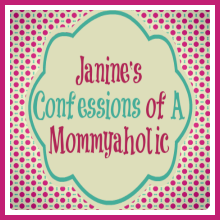Why would you bother posting Italian lessons without getting paid a single cent for it? I hear you ask.
Because I love it, is the answer. I love to teach, I love to write, I love to reminisce about the time we spent living in Italy and I love, with an intense, enduring and devoted love, the fascinating, lyrical and theatrical Italian language.
So let's start from the very beginning, shall we? (since I have it on good authority that it's a very good place to start) ...
As ridiculous as it may seem, I didn't learn the Italian alphabet properly until my son, Ben, and I went to live in Sicily - that was after studying the language right throughout high school and for a semester at university, visiting the country three times previously and even teaching it at a beginner level to high school students myself. I never actually remember being taught it when I was a beginner myself, but perhaps it was just skimmed over and I don't remember. When I reached upper high school and uni, I supposed it was assumed knowledge and was therefore not ever touched on there either.
After Ben and I had been living on the organic farm where we were WWOOFers (part of the Willing Workers on Organic Farms program) for about a month, the owner of the property asked me if I would tutor his six year old son, who I'll refer to as Signorino A. Now Signorino A was very unhappy at pre-school and was having a lot of difficulty in learning the alphabet. His mother, who was interested in early childhood education, but who had no formal training in it at that time, suspected that he may have been dyslexic, since she was herself and she remembered having the same frustrations when she was trying to learn the alphabet as a child.
So there began a very interesting, albeit brief, period for me as an educator and a linguist: I would teach Signorino A and my son together. Signorino A could speak German, Italian and Sicilian fluently (his father was German, his mother was from northern Italy and he had been brought up in Sicily) and he also understood quite a lot of English words from having heard his parents converse in English with many of the WWOOFers who passed through his home. However, he was struggling to remember the names and forms of the numbers and the letters of the alphabet. Ben, on the other hand, still only knew a handful of Italian words at that point, but had no learning difficulties. So in teaching both of them, I needed to swap between English and Italian and also try to cater simultaneously for their different learning needs.
(Ben and Signorino A doing their lessons together in the fresh air)
The first activity we did together was to paint the letters of the alphabet (you can see part of our efforts in the first photograph). I learnt within the space of about ten minutes that there is an enormous gulf between the skills needed to educate pre-readers and the skills needed to guide the learning of high school students. It took me even less than that to realise I was really quite ill-equipped to take on the tutoring on this little boy, since I myself didn't actually know how all the letters of the Italian alphabet were pronounced.
So I asked one of the stonemasons who was working on restoring an old house on the same property (who I also happened to have fallen madly in love with and who later happened to become the father of my daughter .. but let's not jump the gun just yet!) to teach it to me.
I wrote the letters down on a piece of paper, pointed to them, and when he pronounced them, I wrote them down phonetically. Then, to make it fun for the kids, we played the alphabet song (the one that has the same tune as Twinkle Twinkle Little Star) on the guitar and taught them to sing it. I imagined that it would be a lot easier for Signorino A to remember the order and pronunciation of the letters if he was taught it through music. It would also feel a lot less like a formal lesson to him and he was not enthusiastic about anything that felt like a formal lesson, due to his early experiences in the school system.
Not only did he learn the alphabet within a couple of days, but Ben and I did too and ever since that week when we sang it together many times over, it has remained cemented in both our brains.
This is a copy from my notebook of how I wrote out the pronunciation of the letters, as taught to me by that stonemason, Giuseppe.
A - Ah
B - Bee
C - chee
D - dee
E- eh
F - effe
G - gee (pronounced 'G', like the beginning of the geometry)
H - akka
I - ee (like the 'e' sound at the beginning of 'Eden')
L - ell-eh
M - emm -eh
N - enn -eh
O - o (a short 'o', as in the beginning of octopus)
P - pee
Q - koo (like the 'coo' part of the word 'cool')
R - air-eh
S- ess-eh
T - tee
U - oo (Like the 'u' sound in 'rude')
V - vee (or voo - sometimes said one way, sometimes the other)
Z - zetta
So here's the question:
Did you notice something missing?
Yep, that's right, a total of 5 letters are missing:
J, K, W, X and Y
These letters do have their own Italian names though and are useful to know when you need to spell aloud an English word which contains one of them.
J - jay (pronounced exactly the same way as it is pronounced in English)
K - kappa
W - vee doppia (doppia is the Italian word for 'double')
X - ix (pronounced like 'six' without the S in front)
Y - ipsillon (the 'ip' sound at the beginning rhymes with 'pip')
There are also a few words in the Italian which do use these letters, having been adapted from foreign words: jeans, for example, was borrowed from French (and means jeans, just like it does in English), koala was taken from Australian English and WC. taken from American English, is frequently seen in use as the abbreviation of Water Closet. The Italian word for xylophone is xilofono and a yak (as in the animal) is also called a yak in Italian.
There are other examples where these letters appear in words in English, but different combinations of letters are used to represent the same sounds, or a similar sound, in Italian. These include: tassì, meaning taxi, and canguro, which in the Italian for kangaroo. The name Julia is pronounced identically in Italian, but spelt Giulia. Romeo and Giulietta is therefore the Italian equivalent of Romeo and Juliet.
I don't have any photos of us performing it either, but I do have a photo of Ben strumming the guitar after one of our little sing-a-longs ...
Well of course that is possible and that is exactly what children do when they are learning their mother language, but that will only get you so far. Living in another country, there are many examples of times when you need to spell out words, such as your name, postal address or email address, particularly during phone conversations. Being able to spell words to others or to understand them when someone spells something out to you really helps to diminish the language barrier.
You would have noticed that the letter I in Italian in pronounced the same as the English E. That one letter alone can land you in considerable confusion in a situation where you are relying on your tongue and your ears only when pen and paper are not at hand. Once, before I had perfected the Italian alphabet, the mother of a little girl Ben had played with a few times asked me how to spell his name to write on a birthday invitation. I clearly hasn't learnt my vowels properly at this point, because when he got the invitation, it was addressed to 'Bin'.
My sister-in-law, Monika (who is actually my partner's brother's partner - but sister-in-law sounds so much easier), comes from Poland and had lived in Sicily for almost ten years when I first met her. The first letter of the Italian alphabet she learnt was K and, as she once told me, hands down the phrase she had used most frequently in the decade she had lived in Italy was "Monika si scrive con la kappa!" meaning: "It's Monika with a K!"
I hadn't expected, and was pleasantly surprised, to discover that having a solid knowledge of the alphabet also really improved my all-round pronunciation as well as making it easier for me to commit new words to memory. When I heard a new word, I would ask someone to spell it out for me and I would spell it back to myself or write it down. Even if I didn't have a pen with me at the time to write down the word, spelling it back to myself helped me to visualise the order of the letters and recall the word the next time I wanted to use it in a sentence myself.
I would never have thought that I could have gained so many benefits from simply putting in a little bit of effort over a couple of days to thoroughly learn the Italian alphabet. Once I'd done so, I couldn't believe that I hadn't done so sooner and nor could I believe how little emphasis had been put on memorising it when I had been at school. Better late than never though, right? Or, or they say in Italy, meglio tardi che mai!
So now you know you ABC, I hope you'll do Lesson 2 with me!!
Go on, it'll be fun ... we'll be talking about star signs (I'll let you know why next Monday!)
Ciao for now!
So tell me, which languages do you know or used to know or want to know? And how did you learn them or how are you planning on learning them? I love talking about languages and can't wait to read your comments!












No comments:
Post a Comment